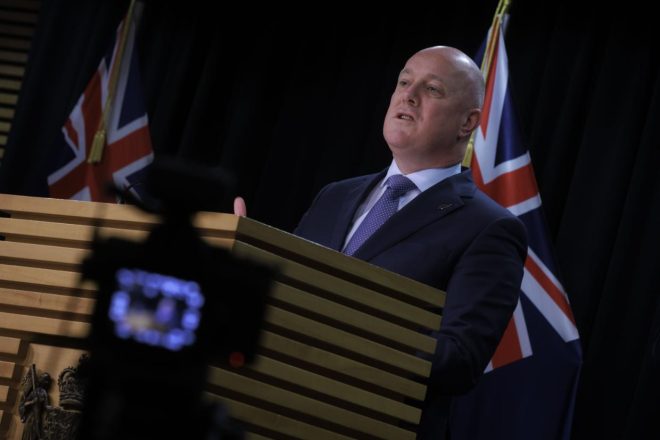Ang Batas sa Prinsipyo ng Treaty Prinsiples ay lumalapit sa Parlyamento. Tinalakay ito ng Gabinete noong Lunes at plano na ipakilala ito noong Nobyembre. Nilalayon ng batas na ito na baguhin ang mga prinsipyo ng Te Tiriti o Waitangi, na nakatuon sa mga karapatan sa pag-aari sa halip na mga karapatang katutubong. Ito ay pinamumunuan ng Associate Justice Minister na si David Seymour.
Binanggit ni Punong Ministro Christopher Luxon na bagaman hindi susuportahan ng National Party ang panukalang batas na nagiging batas, sasang-ayon sila sa isang pampublikong pagtatanong sa nilalaman nito. Sa mga nakaraang kaganapan sa buong bansa, nahaharap si Luxon ng pagpuna para sa panukalang batas. Sinubukan niyang tugunan ito sa pamamagitan ng pagsasabi na sinusuportahan ng National ang panukalang batas para lamang sa unang pagbabasa nito.
Noong Lunes, pagkatapos ng talakayan ng Gabinete, kinumpirma ni Luxon na walang referendum tungkol sa mga prinsipyo ng Kasunduan. Sinabi niya, “Sinusuportahan namin ang isang panukalang batas sa unang pagbabasa. Darating ito sa bahay noong Nobyembre,” uulit ang limitadong suporta ng National.
Tumataas ang oposisyon sa panukalang batas. Mahigit 400 na mga pinuno ng Kristiyano ang pumirma sa isang sulat na humihiling sa Pamahalaan Nagbabala sila na ang panukalang batas ay maaaring makapinsala sa Aotearoa New Zealand at binigyang diin na ang mga simbahan ay may tungkulin na itaguyod ang mana ng Te Tiriti o Waitangi. Hinihimok nila ang mga MP na ihinto ang panukalang batas mula sa pagpunta sa Select Committee.
Pinuna din ni Willie Jackson ng Labour ang panukalang batas, na sinasabi na hindi ito dapat pumasok sa Parlyamento at tinawag sa mga ministro ng National Party na salungat ito. Gayunpaman, sinabi ni Luxon na hindi niya pipigilan ang panukalang batas at sinusuportahan na hayaan itong suriin ng isang komite ng parlamentaryo.
Ipinaliwanag ni Luxon na ang Treaty Principles Bill ay isang makabuluhang isyu sa panahon ng negosasyon sa koalisyon, na tumagal ng oras upang malutas. Iminungkahi ni Seymour na dapat maghintay ang mga talakayan hanggang sa ang panukalang batas ay nasa Parlyamento, na sinasabing makukumpirma nito na “ang lahat ng tao ay may pantay na karapatan.”




























































